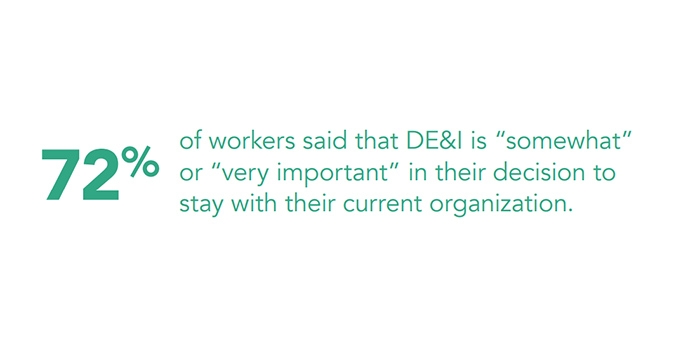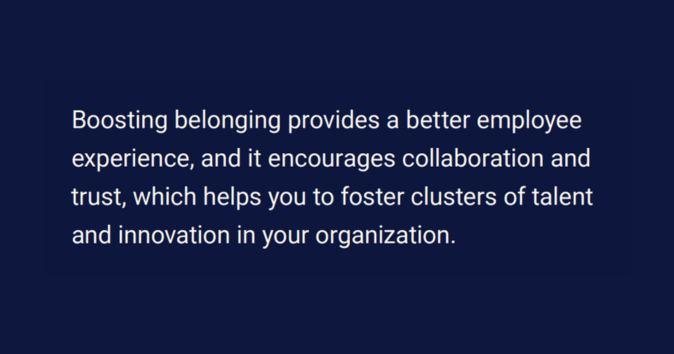What is a Mentorship Program? Steps & Benefits

Mentorship programs are a common benefit among companies, and it's not difficult to understand why. With the potential to increase employee engagement, lower turnover, and foster a more cohesive organization, mentorship programs are a welcome addition to most workplaces.
What is a mentorship program? Mentorship programs connect more senior employees with more junior ones to provide guidance, insight, and training for career development. They are typically one-on-one relationships, but can also take on a group or peer-to-peer structure.
A mentor can provide knowledge and resources that help younger employees realize their full potential regardless of their background. Mentoring connections benefit all participants – mentors often get just as much out of the dynamic as mentees do.
Let's explore more about workplace mentorship programs, how they work, and how you can create a successful program for your organization.
What are the 3 C's of mentorship?
When it comes to building a successful mentor program, consider the three C's of successful mentoring:
Clarity
To ensure the success of a mentoring program, you need to be clear on what you want to accomplish. What type of program do you want to create and how will it add to your workplace?
You will probably aim for the mentoring program to foster trust and provide meaningful growth for its participants. That involves mentors who listen well and offer insightful feedback, as well as mentees who ask good questions and take action based on the guidance they receive.
Communication
Next, determine how communication will work within the mentoring process. How will people be paired? How are they meant to communicate during and between sessions?
Remember that the best communication is transparent, honest, and direct. Consider how this can be enfolded into your program's design to ensure high-quality communication across participants.
Commitment
What is the commitment of mentors and mentees? How often will they meet and for how long? Consistency is key to a mentor program's success.
You also want your participants to be dedicated to the process so that they show up and really put in the work. It's important they set goals and track them so that both participants and the organization at large can measure the program's impact.
What are the types of mentorship programs?
Career advancement mentoring
Career mentoring centers around employee growth. It focuses on training employees so that they can grow within the organization and generally gain experience and seniority.
This corporate mentoring style shows employees that their career trajectory matters. It makes them feel more invested in their own growth too and shows them that they are supported by the company for the long-term.
Career mentorship is the most common form of mentoring, and for good reason. It helps improve employee retention and increase overall engagement
Leadership development mentoring
This style of mentorship identifies employees with high potential and supports their growth within the organization. This is similar to career development with a deeper focus on fostering leadership growth. It often involves upskilling and coaching employees on leadership style.
Leadership mentoring is beneficial for companies because it bolsters your organization's prospects for future leadership roles.
Diversity mentoring
This mentoring experience focuses on supporting employees from specific identity groups, such as employees of color, LGBTQIA+ employees, women employees, and more. It is a meaningful DEI and belonging initiative and can make employees feel supported by offering a safe space to explore how their identity impacts their work life.
This group mentoring platform fosters an environment of trust, belonging, and support. It can bolster retention rates as well.

Reverse mentoring
This type of mentoring program pairs an older, more experienced employee with a newer employee, and the newer employee serves as the mentor. The younger employee teaches their older coworker about the latest technologies and best practices in the industry.
This is a great way to facilitate inter-generational connection and close the gap between Gen Z, Millennials, and Boomers. It also helps employees upskill regardless of their level of seniority.
Group mentoring
This is a peer-to-peer mentorship format that aims for employees to help one another problem-solve and learn as a group. Ideal for 5-8 employees at a time, it supports collaborative learning and teamwork. It also enables employees to share institutional knowledge and wisdom to help others succeed.
Since it's employee-led, this kind of workplace mentoring has less administrative work involved.
What are the benefits of mentorship?
Benefits of being a mentor
Serving as a mentor at work has many benefits, including:
- Developing communication and leadership skills
- Having the opportunity to shape the company's growth
- Furthering your own professional development
- Keeping up-to-date on the latest trends and technologies
- Connecting with younger employees you might not otherwise work with
- Honing teaching skills
Benefits to mentees
The benefits of mentoring for mentees include:
- Receiving guidance on everything from time management and networking to interpersonal relationships, career trajectory, and problem-solving
- Speeding up your professional development
- Getting expert guidance from someone with more experience and insider knowledge
- Honing your focus as you develop your career and talent
- Boosting your motivation and engagement
- Feeling supported by your organization
Benefits for organizations
The benefits of mentorship programs don't end with the program participants. With both mentors and mentees feeling more connected to their organization and more engaged with their fellow teammates, your organization is bound to feel the positives, too.
A successful mentoring program can increase engagement and retention, attract new talent, and improve your existing team's overall talent and skills. Many workers find mentoring programs to be a real perk, so they may seek out companies that offer them when looking for work.
A good mentoring relationship can mean a more cohesive, tight-knit team that knows how to collaborate effectively and is more invested in the company's outcomes, making their work higher quality and more effective overall.
What are the key elements of a mentorship program?
When you start a mentorship program, there are many steps to take to ensure its success.
Planning: Every new work initiative needs a plan! Use the initial planning stages to determine your vision, set your goals, establish guidelines, and plan for potential challenges. What are your intentions for the program? Who will be the program manager? How will it fit into your overall workflow and workplace culture?
Mentor selection and training: Who will your mentors be? If your program is selective, determine how you will select or recruit your mentors. Or, if you have an open sign-up, plan how to organize that. Regardless of your methods, everyone will need to be trained on best practices and the program format – so be sure to have those guidelines ready when the time comes.
Mentee selection and initial coaching: Who is allowed to participate in your formal mentorship program? Can anyone join or are they selected? You'll need to set the mentees' expectations. Some of them may assume that mentorship ends in a promotion while others might not take it seriously.
Matching mentors and mentees: How will you pair mentees and mentors? Will it be random or will you use matching software? When it comes to matching, it's important to consider role, tenure, skills, and personality. For larger organizations, it is logical to pair employees from the same department who already work together rather than two people who will rarely interact or collaborate.
Mentor program tracking and accountability: It's crucial to track your program to gauge its success and impact. How will you keep track? Will you send out surveys? Are there benchmarks for each mentoring pair?
Mentor program assessment: Following the tracking, you'll have to regularly assess the success of the mentoring sessions. You can check in with participants and send out a survey then review the data to see what's working and what isn't. A mentor may file reports at a regular interval to report on how their mentor relationship is going as well.
Employee surveys can be extremely impactful when done right. Read this "Guide to Employee Engagement Surveys" to learn how to craft them.
What are the steps to building a successful mentorship program?
Determine your mentoring goals
To start a mentoring program, you need to know what you want to get out of it.
While mentorship is a proven method to increase engagement at work and facilitate an overall stronger workplace through personal and professional development, with mentees being promoted five times more often than those without mentors (Forbes) and 97% of those with a mentor saying they are valuable (National Mentoring Day), it needs intention in order to succeed.
Formal mentoring programs can achieve:
- Higher employee engagement
- Increased rate of promotion
- Higher skilled workers and better quality work
- Lower turnover
- Greater sense of belonging and support at work

Design your mentoring program
What structure will your program have? Will you use mentoring software? Will there be a formal or informal mentoring style? Will it be one-on-one, traditional mentoring, or something more specialized like reverse mentoring or diversity mentoring?
Mentoring software can help facilitate the process and structured programs are more likely to be successful. When you create a program, you should determine who can participate, how often the mentor pairs will meet, and how you'll measure the program's success.
Attract participants for your mentoring programs
Next up is program promotion. How will you get employees to join the program? They need to be clear on what your mentorship programs offer, what the time commitment is, and how it might impact their work and career trajectory.
To get leaders to participate in the program, you'll need to showcase the value of mentorship and what a positive mentorship relationship can do for them.
Pair mentors and mentees
Finally, you'll need to pair mentees and mentors together. Will you use mentoring software to match people? How will you facilitate intra- and cross-team matching? How can you mix seniority levels? It's a good idea to consider participants' personal and professional experiences and interests, as both will bear relevance to the mentoring relationship.
FAQs:
What is the ROI of mentoring?
According to ForbesOpens in a new tabcompanies with mentoring programs had 18% better than average profits, and 84% of U.S. Fortune 500 companies have mentorship programs. On top of this, mentoring reduces turnover and increases employee engagement, both of which directly contribute to your bottom line.
What is peer mentoring?
Peer-to-peer mentoring involves employees counseling each other on workplace dynamics, industry trends, and relevant skills. It is a more egalitarian style of mentorship.
What are the benefits of mentorship programs?
Mentor programs boost employee engagement, reduce turnover, and help cultivate a more skilled workforce. All of this contributes to your bottom line, as well as your company's internal working dynamics, and can lead to more efficient and higher-quality work.
How do you know if a mentoring program is successful?
The best way to measure a mentorship program's success is by asking the participants how they feel about it. Positive feedback indicates program success. Additionally, you can compare your engagement and turnover to what it was before the program was established and see how those metrics have changed.
Conclusion
When it comes to answering the question, "What is a mentorship program?", you can hopefully now see that successful mentoring can take on many forms. From traditional mentoring to group workplace mentoring programs, these initiatives can have a positive impact on workplaces of any size across industries.